Indoor playgrounds are revolutionizing the way we think about early education. These vibrant and dynamic spaces are more than just areas for play; they are essential tools in the developmental journey of young learners. In this article, we will delve into the multifaceted role of indoor playgrounds in kindergartens and why they are becoming a necessity in modern educational settings.
This article delves into the critical aspects of successful preschool indoor playground design. It underscores the necessity of integrating safety, educational components, and inclusivity to craft a stimulating and secure environment for young learners.
The importance of such an investment cannot be overstated. It’s not just about fun; it’s about crafting an ecosystem that supports holistic child development.
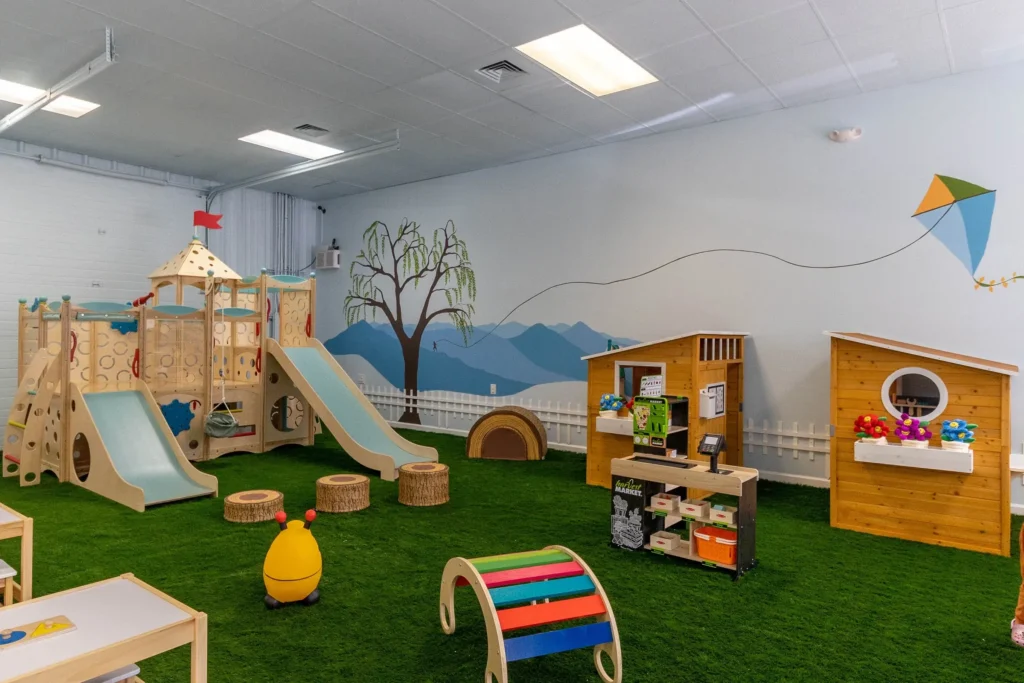

The Importance of Play in Early Education
Play is not just an activity, it’s a vital part of a child’s educational journey. Through play, children develop essential skills such as problem-solving, creativity, and social interaction. Preschool indoor playground design serves as a multifaceted educational tool, offering a safe and controlled environment for children to explore these skills.
Cognitive Development Through Play: Play stimulates children’s cognitive growth by encouraging creativity, problem-solving skills, and the ability to focus and pay attention. Indoor playgrounds, with their varied structures and play equipment, provide a rich environment for these cognitive skills to flourish.
Social and Emotional Growth: Indoor playgrounds facilitate social interactions among children, teaching them valuable lessons about sharing, cooperation, and empathy. These interactions are foundational in developing emotional intelligence and interpersonal skills.
What Is Preschool Indoor Playground Design?
A preschool indoor playground is a dynamic space designed for young children to play and learn safely indoors. These areas are equipped with a variety of play equipment like slides, climbing frames, and ball pits, suitable for children to use all year round, no matter the weather. The design of these playgrounds focuses on the essential role of play in a child’s early development, offering a secure environment for kids to enhance their physical skills, engage in creative play, and build social connections with peers.
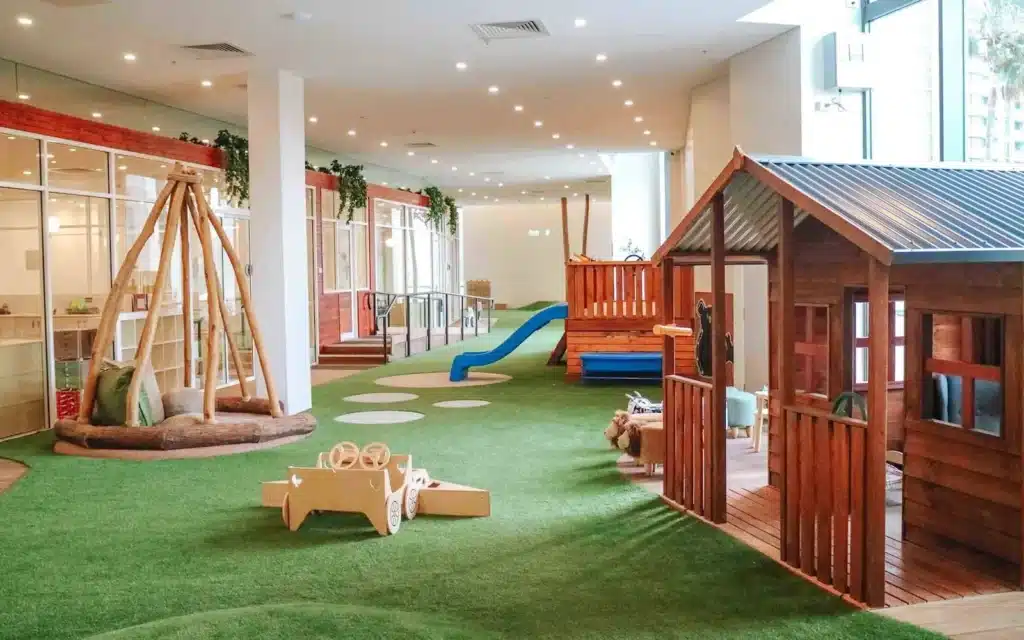


These indoor play areas are tailored to meet the developmental stages of preschoolers, ensuring all play structures are age-appropriate and safe. The setup encourages kids to be active, explore, and develop both cognitive and motor skills. With educational themes woven into the play experience, children are exposed to learning in a fun and interactive way. Indoor playgrounds serve as a versatile space where children can not only exercise but also develop critical thinking, teamwork, and self-expression, promoting an early love for learning and physical activity.
Why an Preschool Indoor Playground Should Be Designed?

Limited Physical Activity in Adverse Weather
One of the primary challenges preschools face is ensuring children receive adequate physical activity, which is important for their health and development. Outdoor play, an essential component of early childhood education, often falls victim to adverse weather conditions. Rain, snow, extreme heat, or cold can significantly limit outdoor playtime, leading to a reduction in physical activity among young learners. This reduction not only impacts their physical health by restricting opportunities for exercise but also affects their cognitive development and social skills, which are enhanced through active play.
Safety Concerns in Outdoor Settings
While outdoor playgrounds offer invaluable experiences, they also introduce safety risks that can be concerning for educators and parents alike. Natural elements and outdoor conditions contribute to these risks. Uneven surfaces, natural debris, and seasonal changes can turn a harmless play area into a hazard zone. The unpredictability of these elements means that even with vigilant supervision, accidents can occur, leading to injuries that could have been prevented in a more controlled environment.
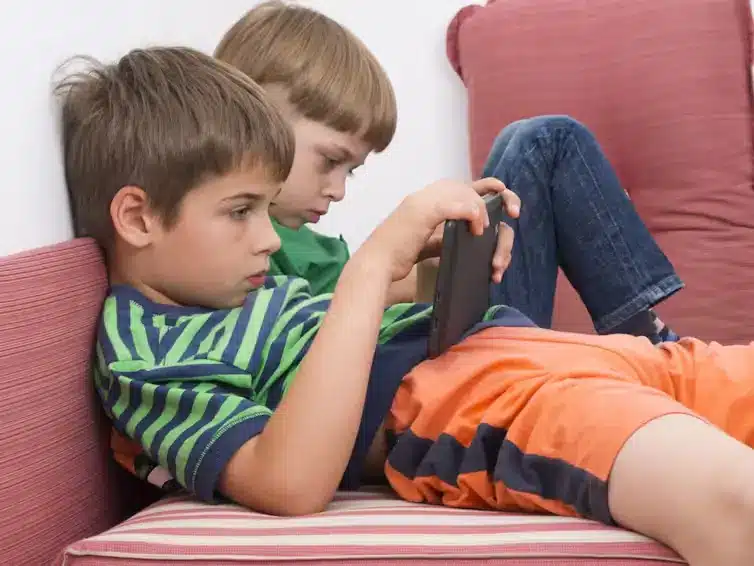
Increasing Sedentary Lifestyle Among Children
The rise in sedentary lifestyles among children, fueled by limited outdoor play and an increase in screen time, poses significant health risks, including obesity and reduced motor skills. This worrying trend underscores the need for more physical activity to ensure healthier childhood development.
Educational Challenges in Early Development
The lack of engaging educational tools within traditional classroom settings poses significant challenges in addressing the diverse needs of preschool learners. Children’s early development with education can shape their attitudes towards learning for years to come. Engaging young learners requires more than just traditional teaching methods; it requires an environment that stimulates their curiosity, creativity, and desire to explore. Without this stimulation, children may not develop a love for learning, potentially impacting their learning path.
Benefits of Preschool Indoor Playground Design
Preschool indoor playground design is a standout choice for kindergartens, offering a blend of safety, engagement, and physical activity. They provide a controlled environment where children can explore, learn, and play, regardless of outdoor weather conditions, making every day an opportunity for development.
Year-Round Physical Activity
- Indoor playground ensure children remain active throughout the year, promoting physical health and motor skills development. This consistent access to physical play is vital in combating the sedentary lifestyle increasingly common among young children.
- Encouraging Healthy Habits: By providing a space for daily exercise, preschool indoor playground design help instill the importance of an active lifestyle from an early age. This early introduction to regular physical activity can lay the foundation for lifelong health and fitness.
Enhanced Safety Measures
- Safety is a paramount concern in any educational setting. Preshcool indoor playground design with the highest safety standards, featuring soft surfaces, secure equipment, and age-appropriate designs that minimize the risk of injuries.
- Controlled Environment: The controlled indoor environment eliminates the unpredictability of outdoor play areas, reducing the risk associated with weather-related hazards and ensuring a safe play space year-round.
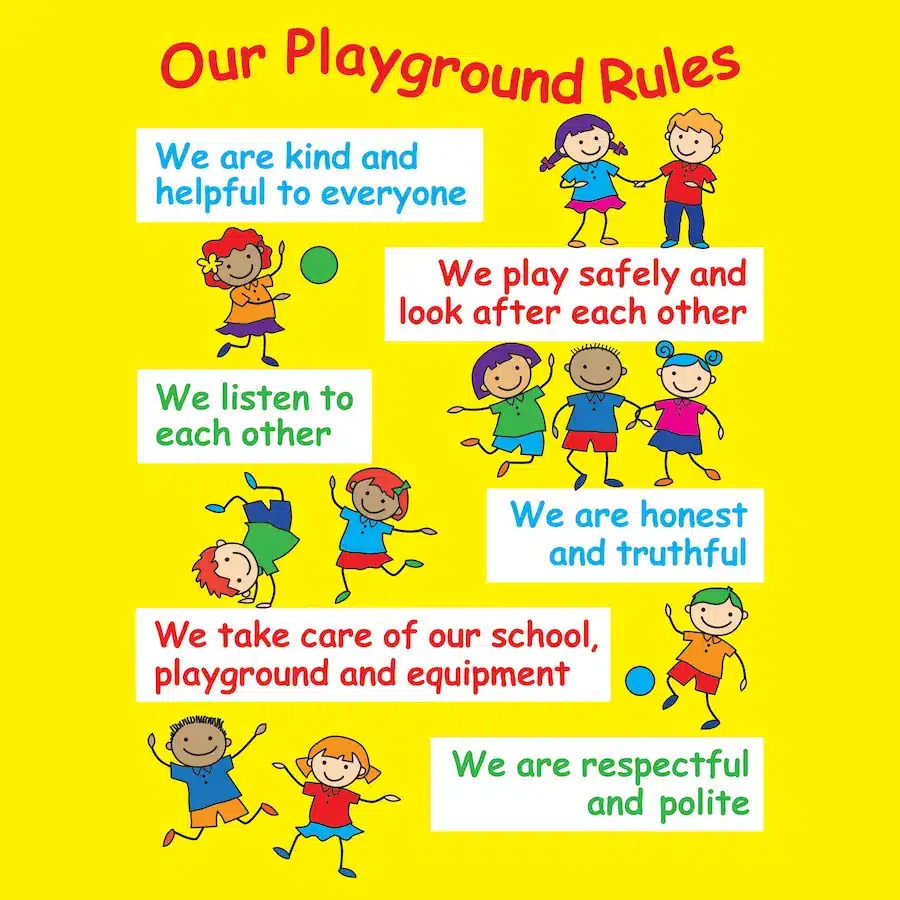
Cognitive and Social Development
- Preshcool indoor playground is rich with opportunities for cognitive and social development. Through interactive play, children learn problem-solving skills, teamwork, and communication, preparing them for academic learning and social interactions.
- Boosting Creativity and Imagination: The imaginative play encouraged in these settings fosters creativity, critical thinking, and problem-solving abilities. Themed play areas and diverse equipment stimulate children’s imaginations, turning playtime into a dynamic learning experience.
Inclusivity and Accessibility
- One of the greatest strengths of preshcool indoor playground design is their ability to cater to children of all abilities. Designing playgrounds with inclusivity in mind ensures that every child can participate, promoting empathy, understanding, and social inclusion from a young age.
- Supporting Diverse Learning Styles: These playgrounds accommodate various learning styles, particularly benefiting kinesthetic learners who thrive on movement and tactile engagement. This inclusive approach to learning ensures that all children have the opportunity to engage with and benefit from playtime activities.

Customizable and Adaptable
- The flexibility of preschool indoor playground design allows kindergartens to tailor the play environment to current educational themes or specific learning objectives. This adaptability makes the playground a versatile tool in the curriculum, capable of supporting a wide range of educational outcomes.
- Ever-evolving Play Spaces: With the ability to update and change the playground setup, educators can keep the play environment fresh and exciting. This not only maintains children’s interest but also introduces them to new challenges and learning opportunities regularly.
Tips on How to Making an Indoor Playground Design?
The preshcool indoor playground design that is safe, engaging, and educational requires careful planning and consideration of the needs of young learners. Here are some tips on how to making an preshcool indoor playground design that will captivate and nurture children in a preshcool setting:
Understand Your Space
- Maximize Use of Available Space: Carefully consider how each square foot of the indoor playground can be used to support various types of play, from active to quiet zones. Effective use of vertical space with climbing walls or multi-level structures can add an exciting dimension to the playground.
- Create Zones for Different Activities: Designating specific areas for arts and crafts, sensory play, and physical activities can help manage the flow of play and ensure children have access to a wide range of experiences.
Focus on Safety
- Regular Maintenance Checks: Beyond selecting safe materials and adhering to safety standards, establish a routine for inspecting playground equipment to catch and fix any potential hazards before they become a problem.
- Safety Training for Staff: Ensure that all staff members are trained on safety protocols and emergency procedures to respond effectively to any incidents that may occur within the indoor playground.



Incorporate Educational Elements
- Interactive Features: Include educational play panels, puzzles, and games that encourage learning through play. These can cover topics like numbers, letters, animals, and basic science concepts.
- Thematic Areas: Design sections around themes such as space, jungle, or under the sea to stimulate imaginative play and learning. These themes can be rotated or updated to keep the playground fresh and engaging.
Integrating Advanced Educational Components
- Technology Integration: Consider incorporating digital learning stations where appropriate, blending traditional play with technology to offer interactive learning experiences. This could include touch screens with educational games or augmented reality experiences that complement the physical play elements.
- Curriculum Connection: Design the playground to align with the educational curriculum, incorporating elements that reinforce what children are learning in the classroom. This could be as simple as color-coded areas that correspond to different subjects or themes.
Promoting Inclusivity at Every Turn
- Sensory Play Areas: Include dedicated spaces designed to engage children’s senses gently, suitable for those who may be overwhelmed by more intense stimuli. These areas can feature water play, light tables, or tactile panels.
- Cultural Representation: Incorporate cultural elements into the playground design to reflect the diversity of the children’s backgrounds. This can include multilingual signs, world maps, and play structures inspired by different cultures.
Adapting for Flexibility and Future Growth
- Seasonal Updates: Plan for the inclusion of elements that can be swapped out or updated seasonally, keeping the preshool indoor playground design fresh and exciting for children year-round. This could involve rotating themes or introducing new challenges that align with seasonal changes.
- Expandable Components: Choose play equipment that allows for easy expansion or modification. As your budget grows or needs change, being able to add to the playground without a complete overhaul is invaluable.

Incorporating Multi-Sensory Experiences
- Nature-Inspired Elements: Bringing elements of nature indoors, such as planters with herbs or flowers and natural wood textures, can enhance the sensory experience and connect children with nature.
- Interactive Light and Sound Installations: Use light and sound creatively to add an interactive element to the playground. Floor tiles that light up when stepped on or walls that emit sounds when touched can captivate children’s interest and encourage exploration.
Community and Parental Involvement
- Gather Input: Before finalizing your design, seek feedback from teachers, parents, and even the children themselves. Understanding their needs and desires can guide your design choices.
- Community Spaces: If possible, include areas where parents can interact with their children or observe them play. This encourages parental involvement and provides a space for community building.


Things to Consider When Designing a Preschool Indoor Playground
Understanding User Needs
- Age Appropriateness: Design the playground with equipment suitable for the age range of children who will use it. Different age groups have varying abilities and safety requirements.
- Diverse Abilities: Consider the needs of all children, including those with disabilities. Accessibility and inclusivity should be at the forefront of the design to ensure every child can enjoy the playground.
Strategic Planning and Goal Setting
Whether aiming to enhance physical development, foster social interactions, or support educational objectives, clear goals guide every aspect of the project, from design to implementation. Engaging with stakeholders—children, parents, educators—to understand their needs and preferences is a critical step in this phase. This collaborative approach ensures the playground will be well-received and heavily utilized upon completion.

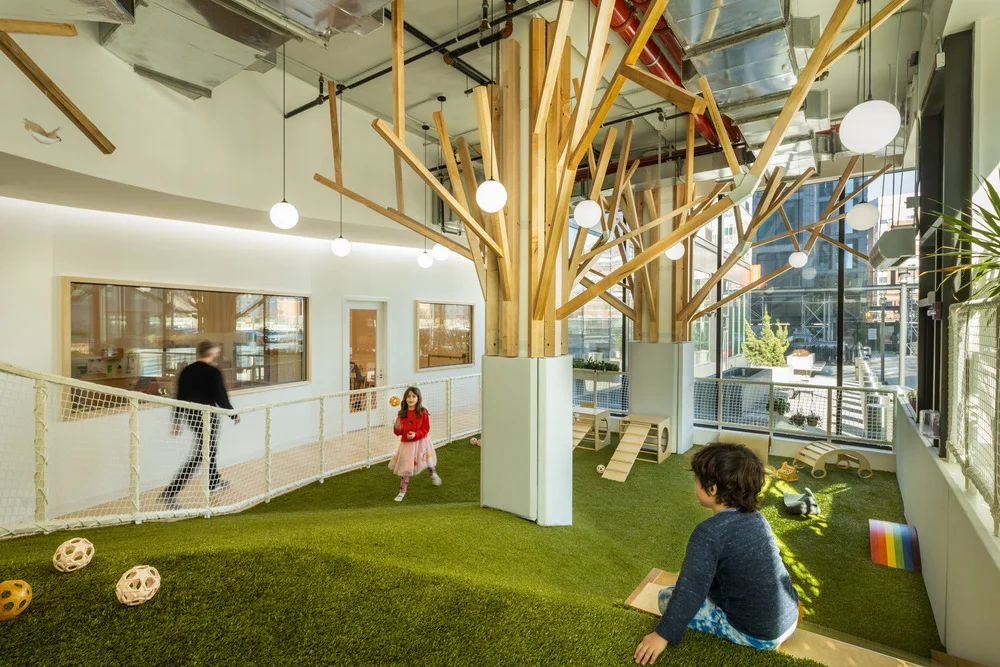
Collaborative Design Process
By bringing together architects, child development specialists, educators, and safety experts, the design process becomes a multidisciplinary effort that addresses every angle, from playful engagement and educational value to safety and accessibility. This team works together to ensure the playground is a space where all children can explore and learn without barriers.
Budgeting and Resource Allocation
Creating a detailed budget that accounts for all expenses associated with the playground’s development, including construction, safety certifications, and maintenance, helps avoid unexpected costs. Optimizing resources might involve selecting equipment that serves multiple purposes or engaging the community to support the project through fundraising or donations.
Sustainable Practices
- Eco-Friendly Materials: Choose materials that are not only safe and durable but also environmentally friendly, contributing to a sustainable future.
- Energy Efficiency: Consider the environmental impact of the playground’s operation, opting for energy-efficient lighting, climate control systems, and other technologies that minimize the carbon footprint.
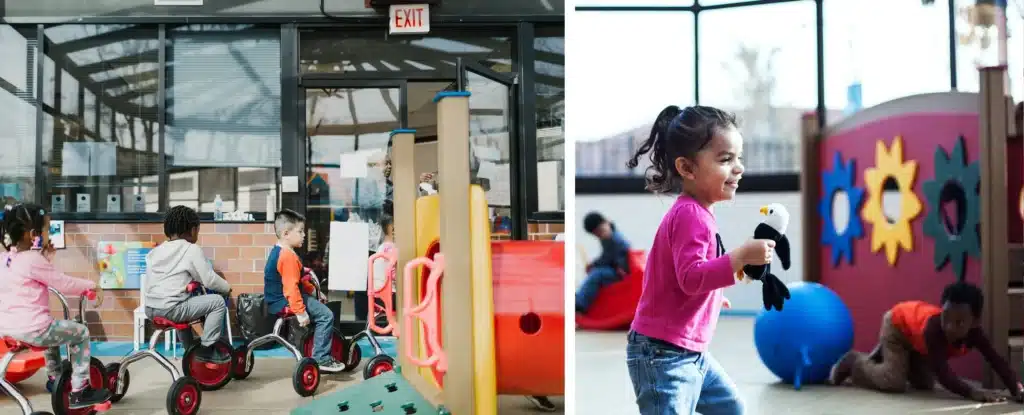
Preschool indoor playground design is a crucial element in creating a balanced and enriching environment for preshcool students. At Xiha Montessori, we understand the importance of this investment and are committed to providing top-quality, customized solutions for preschools worldwide. An indoor playground is not just a place for fun; it’s a space where the foundations for a bright future are laid.













